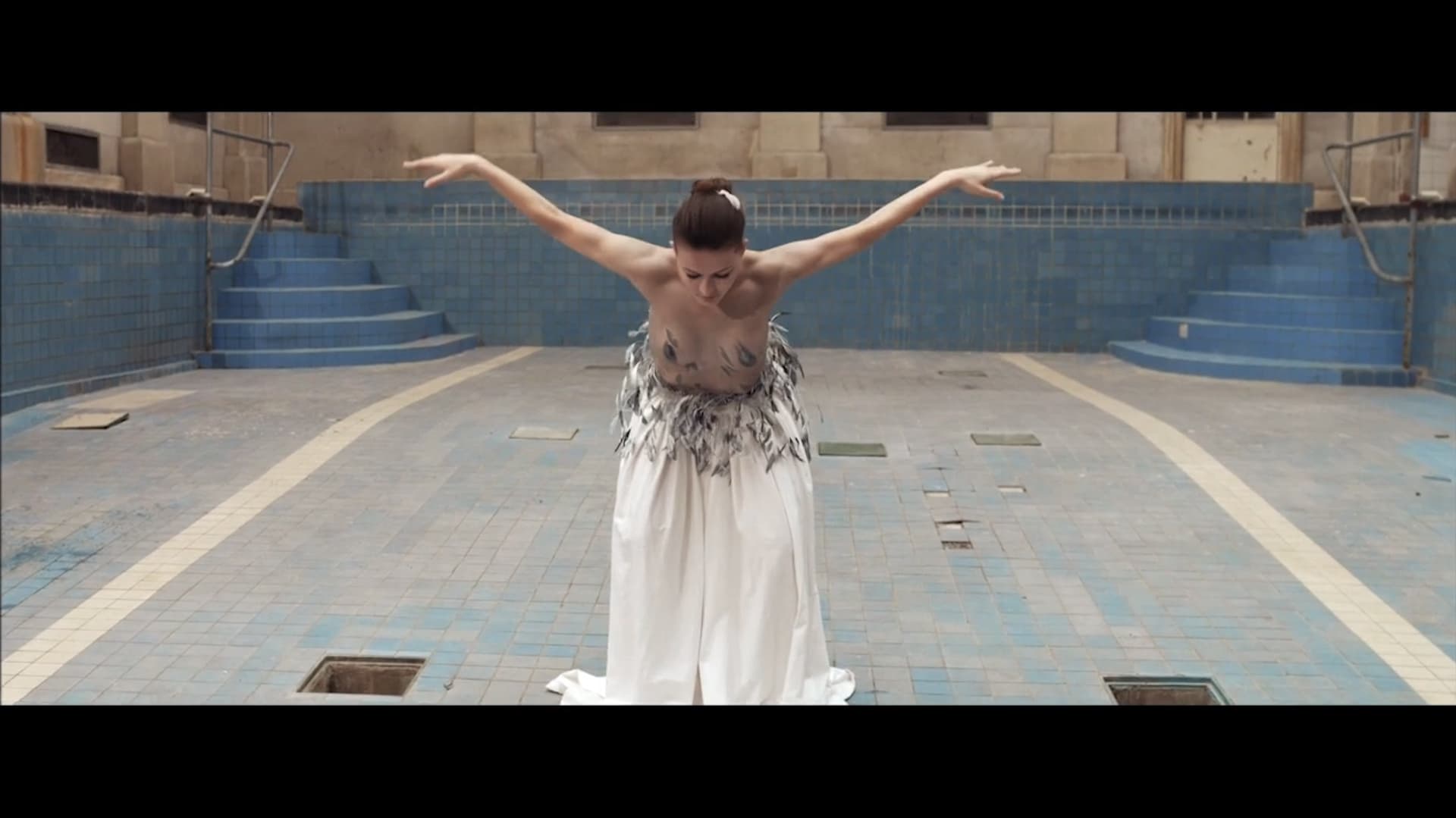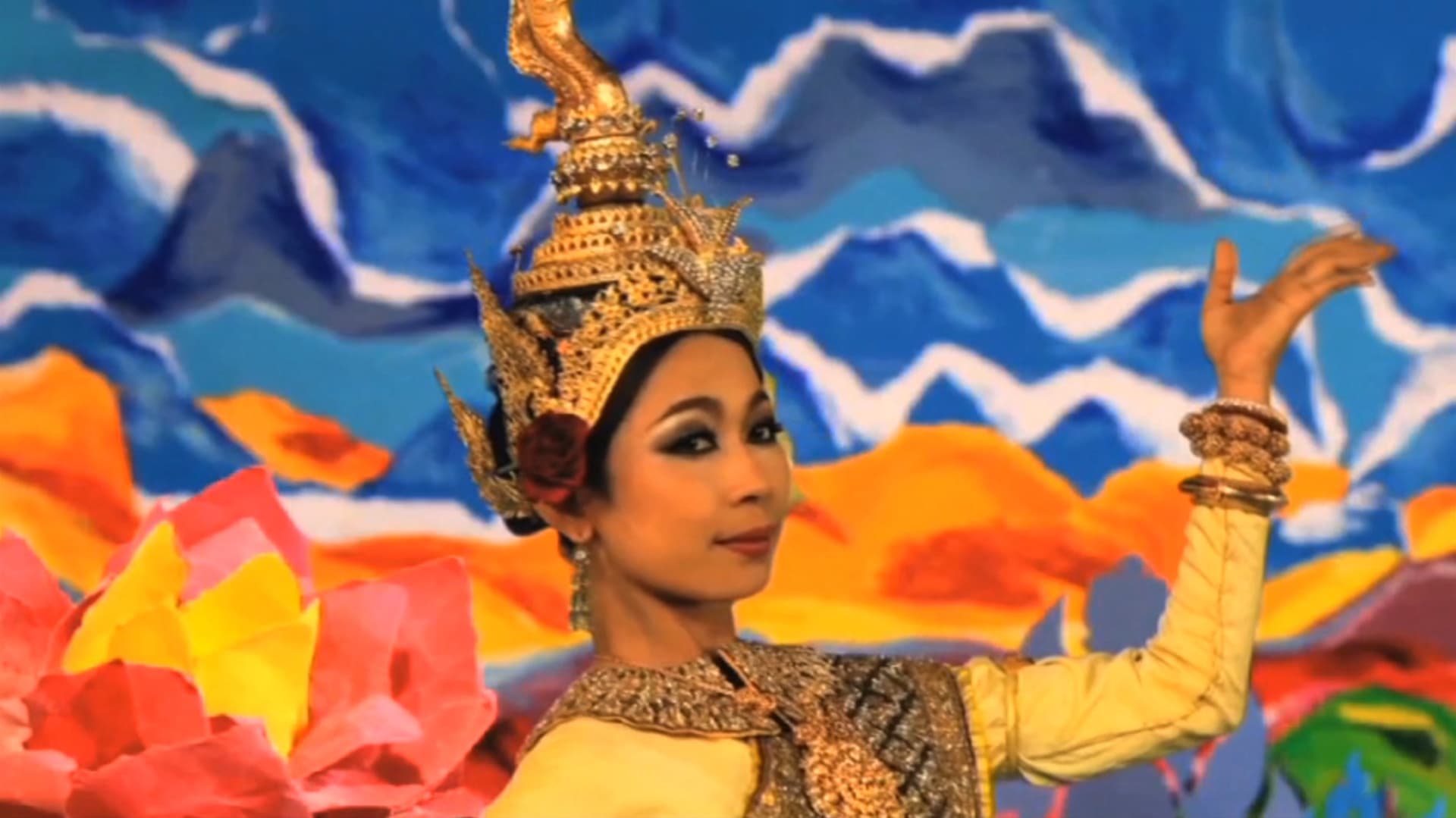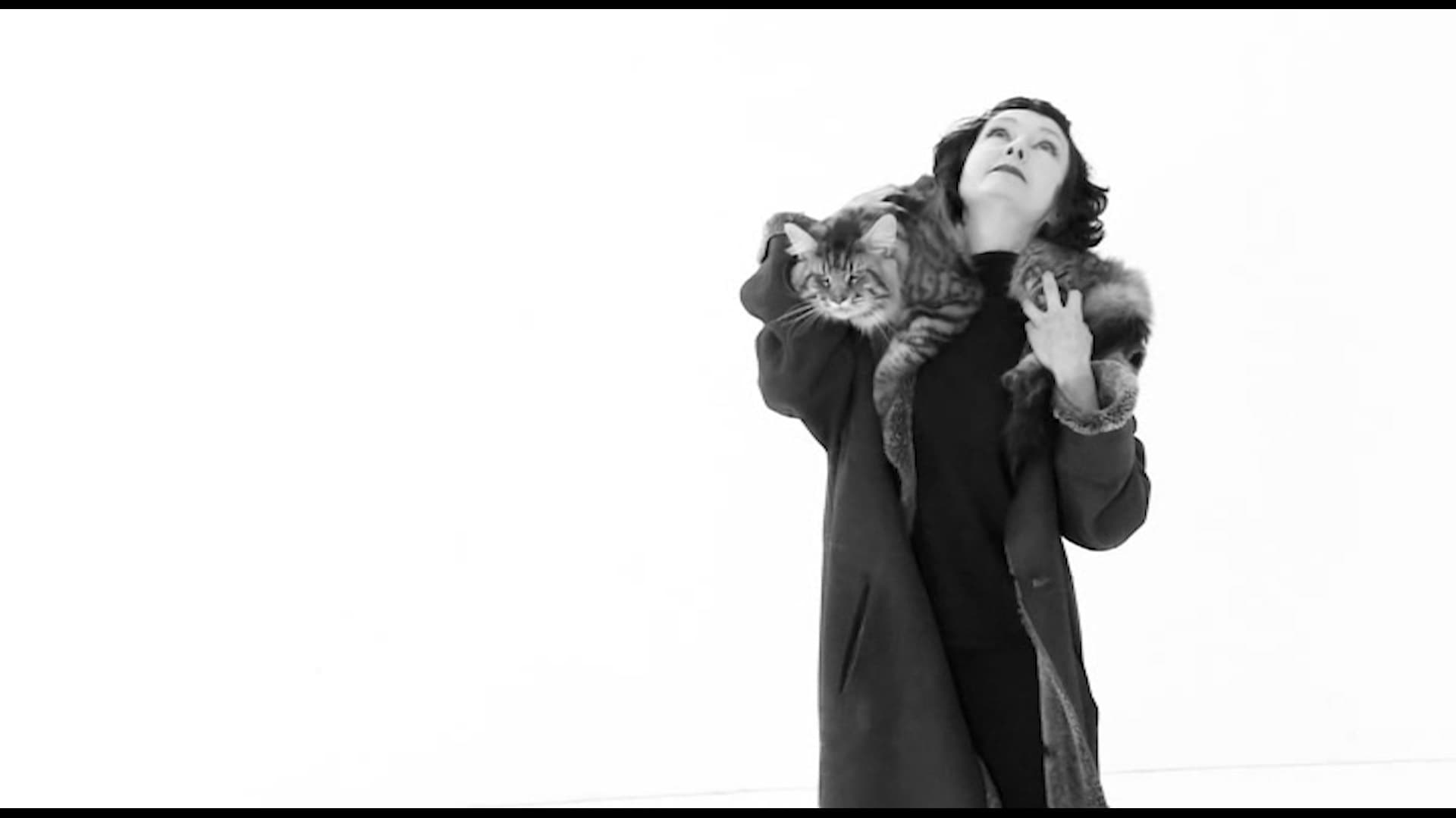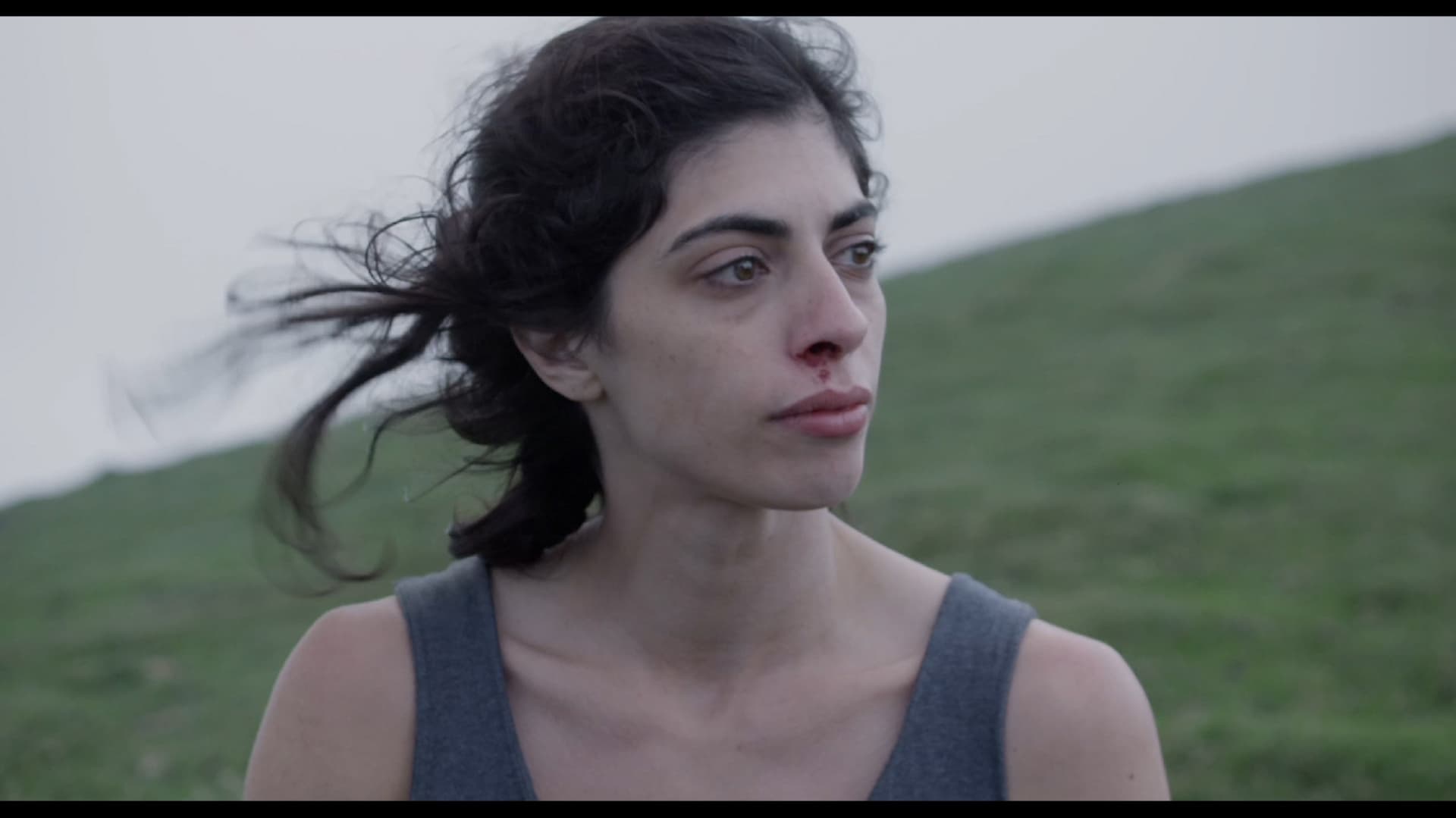TOP > 変身
2020年9月16日(水)21:00〜翌日の昼12:00
変身・4作品
Wed 16 SEP 9:00 P.M.〜12:00 P.M. JST (+UTC9)
Metamorphosing Dances
Adelaars
鷲
9’29
監督:Andrea Sudorova
振付:Jan Sevcik
スロバキア 2013
ダンス映画監督たちへのメールインタビュー
A Mail Questionnair to Dance Film Directors
インタビュアー・翻訳:黒田瑞仁
作品の冒頭でモンゴルの舞踊が振り付けの元になっていること、女性に敬意を表するための作品であるというこの作品の二つの重要な要素が示されます。ところで、このモンゴルの舞踊は女性性の強い踊りなのでしょうか、それともこの二つを結びつけるのはあなたのアイディアだったのでしょうか。
この伝統的な踊りは元は男性のシャーマンのものでした。鷲の動きを真似たスピリチュアルな儀式のための踊りで、集中、力、健康、自由と見渡す力を象徴しています。鷲はモンゴル文化一般にとっても多くの意味を持っています。伝統的な鷲踊りの本来の目的は霊的なエネルギーを治療などの目的のために現実世界に向けることにあるのでしょう。先に触れた通り、鷲踊りの原型は男性シャーマンによるソロの踊りです。主に腕と上半身の動きを使い上裸で行うもので、集中がもたらす強さと力や、文字通り全ての筋肉の動きが観察できるような踊りでした。私は最初にこの踊りを見たときに深く心を動かされ、きっと自分だけの形でこの踊りをするだろうと確信しました。母が亡くなった頃でもありました。私が持っていた母に関するすべての感情と痛みを新しい形に変換したのです。私は女性がどんなに強く、美しく、尊重されるべきかということに気づきました。彼女たちが新しい命をもたらし、守るために何を犠牲にしなければいけないのか。だから筋肉質で半裸のシャーマンの女性バージョンをつくりました。女性たちは大抵どんな男よりも強いものです。あなたが言うように私は二つの別々な要素を合わせて新しいものをつくります。元の形からひらめきを得て、そっと別の意味、この場合は、ーー母性ーーを添えるのです。
人が踊ることで鷲になれるというのは驚くべきことです。振付のポイントを教えてください。
先の回答でもうこの質問には半分答えてしまったようです。私の新しい鷲踊りは当初舞台作品のために作られましたが、その成功を祝してあなたが観ることになった映画版として「永遠の命」を与えることになりました。映画版になるにあたってはいくつかのアップグレードが必要だったので、アンドレア・スドロヴァAndrea Sudorova監督と一緒にコンセプトに変更を加えました。小さな鷲が生まれるという、ちょっとした物語を加えたんです。小さな鷲は、大人の鷲たちが飛行のために準備するのを見ています。そこで小さな鷲は動きを真似て、自分の力で飛ぶことを夢見るようになります。最後には十分成長し、ほかのどの鷲よりも高く飛べるようになります。全てのアイディアは一つ目の回答と密接に繋がっています。
作中には2つの世界が描かれています。平原とプールのような屋内の大きな空間です。どちらも青い空を表しているようにも見えました。二つの世界はどのような関係にあるのでしょうか。
実はこの映画には世界が三つあります。一つ目の世界は黒い幕の前で撮影されていて、ダンサーの妊婦や鷲の胎児をあらわす身体がよく見えるようになっています。二つ目の世界(古いスイミングプール)では鷲が生まれるところで、「巣」や「隠れ家」など沢山の意味がありますが、小さな鷲が自分の周囲の世界を観察できる場所なのです。三つ目の世界、黄色の砂と青い空の開けた景色は自由と生命を、それ自身の雄大な美しさで象徴しています。この二つの世界は色の反転として使われています。青いスイミングプールとその上にある黄色い壁は、青い空とその下にある黄色い砂になります。最後の場面では三羽の鷲はスイミングプールにいますが、色が消えています。映像はほとんどモノクロで、記念碑や大聖堂のような効果で渾身の力と美しさを放つ三人の女神がいるのです。
神秘的な歌が聞こえます。あれは何語で、なんと歌っているのでしょうか。
実はこれがどの言語なのかはよくわかっていません。でも意味は知っています。名前は「ソフィアの歌 Song of Sophia」でデッド・カン・ダンスDead Can Danceが歌っています。ぴったりの曲です。
一つの願いで
知恵に眠る希望を目覚めさせる
一つの希望で
目覚めの内なる知恵を願う
目覚め、願い、希望する
At the beginning of the film, two important elements are mentioned: the Mongolian dance which gave inspiration to the choreography and the respect towards women. Is this Mongolian dance something related strongly to women or did you combine the two elements together?
In its original authentic form this dance is (was) performed by man (shaman). It was kind of the ritual dance in which shaman in spiritual way imitated movements taken from eagle, which represent-symbolize focus, strength, health, freedom and overview. Eagle has lots of special meanings in mongolian culture and in general as well. I guess the main goal of original authentic version of eagle dance is to direct spiritual energies into the physical world, for healing or some other purposes. As I mentioned before eagle dance in its original form was danced as an solo by man-shaman, who’s upper-body was half naked, all the movements he preformed were mainly created with his arms and upper body, viewers could see all the strength and power of concentration and literally every muscle while moving. I was deeply touched and inspired by this dance form and its meaning's when I saw it for the first time and I was sure, that once I will use it in my own way. This moment happened in period when my mother died. I did transform all of my feelings and pain to this new form in which I was looking for everything what my mother meant to me. I did realize how strong, beautiful and important women really are, what all they have to sacrifice while bringing new life to this world, to protect it an so on… So I just changed half naked shaman with all of his muscles and focus to women version, who are often much stronger that any other man…. As you did say I kind of combine two elements mentioned into the whole new form which is just inspired by its original form with gently different meaning, mainly - motherhood.
It's amazing how people can transform into eagles through dance. What is the point of this metamorphosing choreography?
I think this question is already partly answered in my first answer. This new version of eagle dance was originally created for stage but later on, because of its success we did decide to give it "eternal life” in movie version which you know as well. This movie version needed some upgrade from its stage version so together with director Andrea Sudorova we developed a little bit changed concept. We created kind of story in which small eagle is born. On his journey small eagle sees older eagles as they are preparing for a flight. This small eagle is trying to imitate their movements and start to dreaming about flying by its own. at the end when eagle is already full of strength joins them in full power and beauty flying much higher than any other eagle around. Idea is still deeply connected to everything I mentioned in my first answer.
There seem to be two worlds in the film. One is the plains and the other is a large indoor space with a void like a swimming pool. What do these two worlds represent?
Actually there are three worlds in the film. First world is shot on black horizont with first appearance's of detailed dancer body represents pregnancy or kind of prenatal eagle stadium before being born. Second world (old swimming pool) where the eagle is born has many different meanings but main idea is to represent kind of “ nest" or "safe house" from where small eagle can observe whole new world around from. Third world - beautiful open scenery of yellow sand, blue sky and magnificent clouds represents freedom and life with all its majestic beauty. This two worlds we also used due color inversion - blue swimming pool and yellow walls above it turns into blue skies and yellow sands below it. In the last sequence of the movie with all three eagles together we are again in the swimming pool area but this time colors are gone. Image is almost monochromatic to create almost monumental, cathedral like effect with three kind of goddesses in its full power and beauty.
The song used in the film sounds quite mysterious. What language is it in and what does it say?
Actually I don’t know what language is that precisely. But I know it’s translation. Song name is: “Song of Sophia” and it is created and performed by Dead Can Dance…. I think, it fits perfectly.
"With one wish
We wake the will within wisdom
With one will
We wish the wisdom within waking
Woken, wishing, willing”
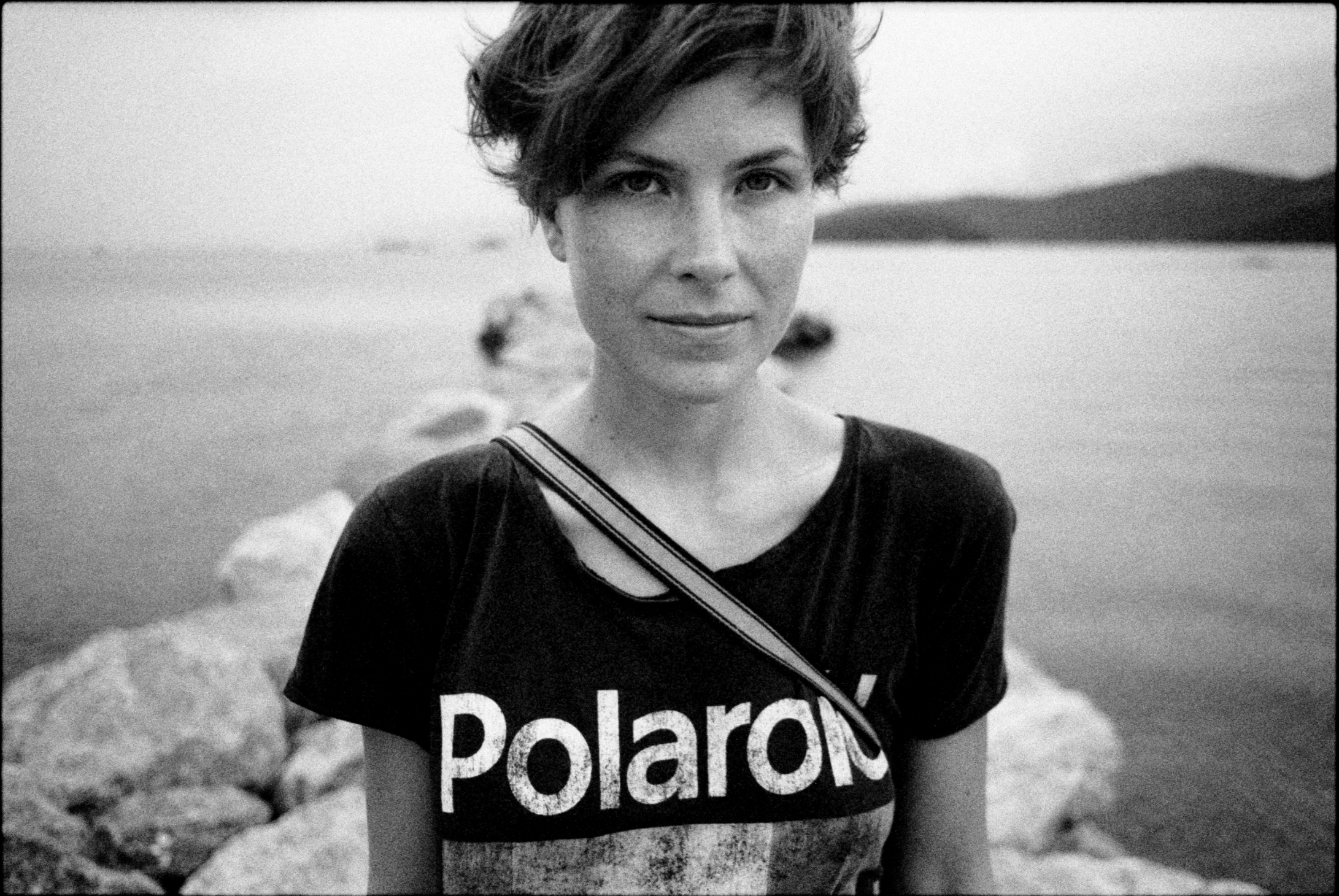
アンドレア・スドロヴァ
私は弁護士の家系に生まれましたが、子供の頃から芸術(美術だけでなくパフォーマンスにも)に関心がありました。そのため家族からのサポートは芸術方面ではあまり受けられませんでした。私はブラチスラバのコメンスキー大学の芸術学部に進学し、フランス語と文学、歴史学を学びます。しかし芸術への興味はなくならず、芸術学部で学士号を取得した後は、コメンスキー大学には残らずにブラチスラバの舞台芸術アカデミーに進学し、2015年に映画テレビ学部で撮影と写真の修士号を取得しました。
今の私の仕事は撮影だけではありません。撮影監督の技術の大部分は照明から来るため、勉強を始めた頃から照明チームの一員として、多くのプロの商業的な現場に加わってきました。大規模な広告キャンペーンの照明の仕事を通じて経験を積み、自分のプロジェクトに応用することで、学生映画をプロレベルに引き上げることができました。
個人の映画制作の一環として監督や脚本、アート写真にも携わっており、長期的なプロジェクトもいくつか手がけています。これまでのところ、私の最大の成功は、私の学士号プロジェクトである『Adelaars』というタイトルの映画です。
www.andreasudorova.com
Andrea Sudorová
Although I was born into a family of lawyers, even as a child I was more inclined towards arts (performing as well as fine arts). During my upbringing, I did not receive much support from my family in this area. As a result, my academic path lead me to the Faculty of Arts at the Comenius University in Bratislava, where I studied the French language and literature and History. Nevertheless, my interest in art prevailed and after receiving my Bachelor degree from the Faculty of Arts, I decided not to continue at the Comenius University and applied to the Academy of Performing Arts in Bratislava, where, in 2015, I received a Master´s degree in Cinematography and Photography from the Faculty of Film and Television.
Today, my job description does not only include cinematography. Because the craft of a cinematographer comes, in large part, from the lighting, I participated in many professional commercial projects, as part of the lighting team, since the beginning of my studies. I gained a lot of experience while setting up lighting for large advertising campaigns which I applied to my own projects and was able to move the limits of student films to a professional level.
As part of my personal filmmaking, I am also involved in directing and scriptwriting, as well as artistic photography which is dominated by several long-term projects. My biggest success, so far, is my bachelor degree project, a film entitled Adelaars.
www.andreasudorova.com
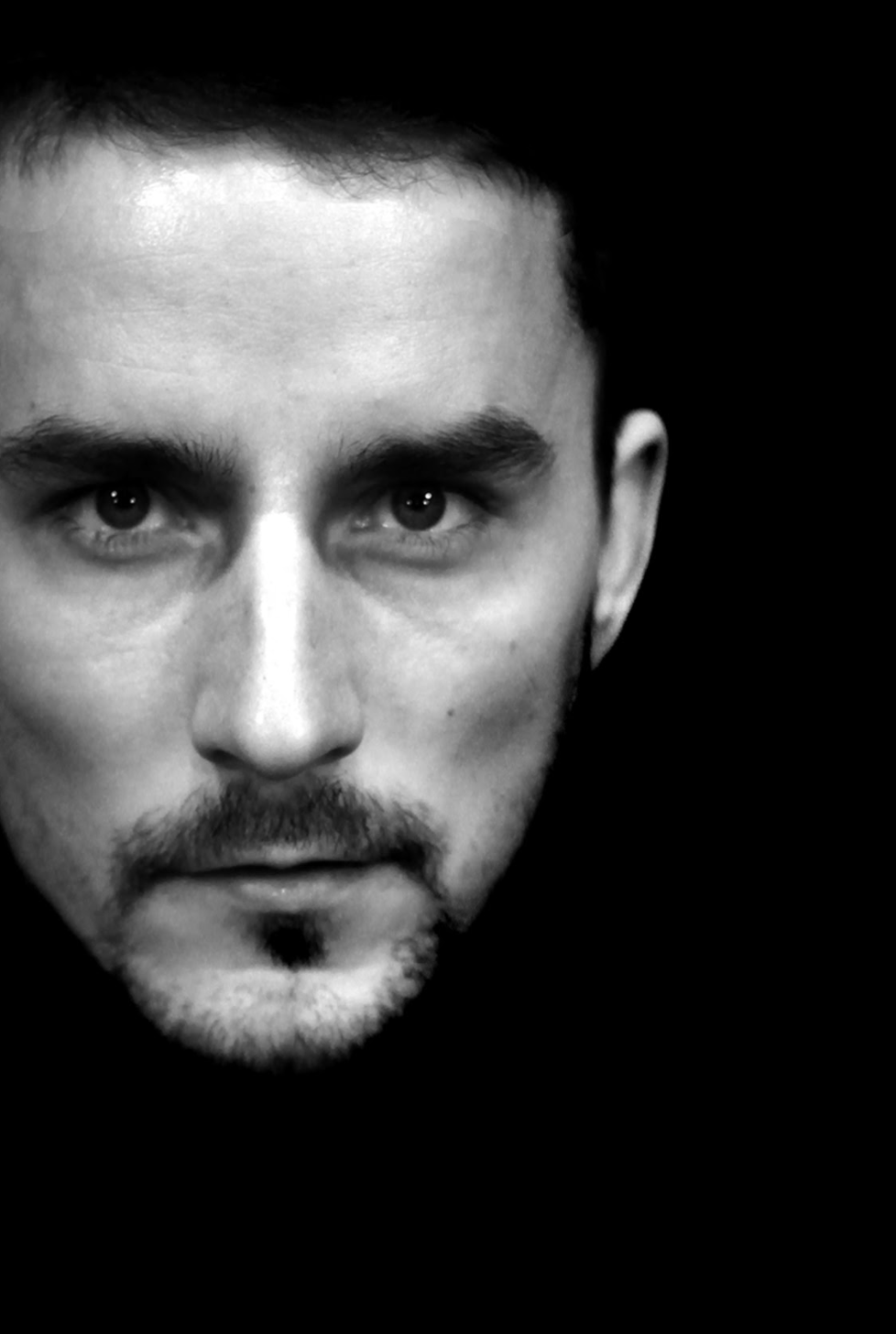
Jan Sevcik [choreographer]
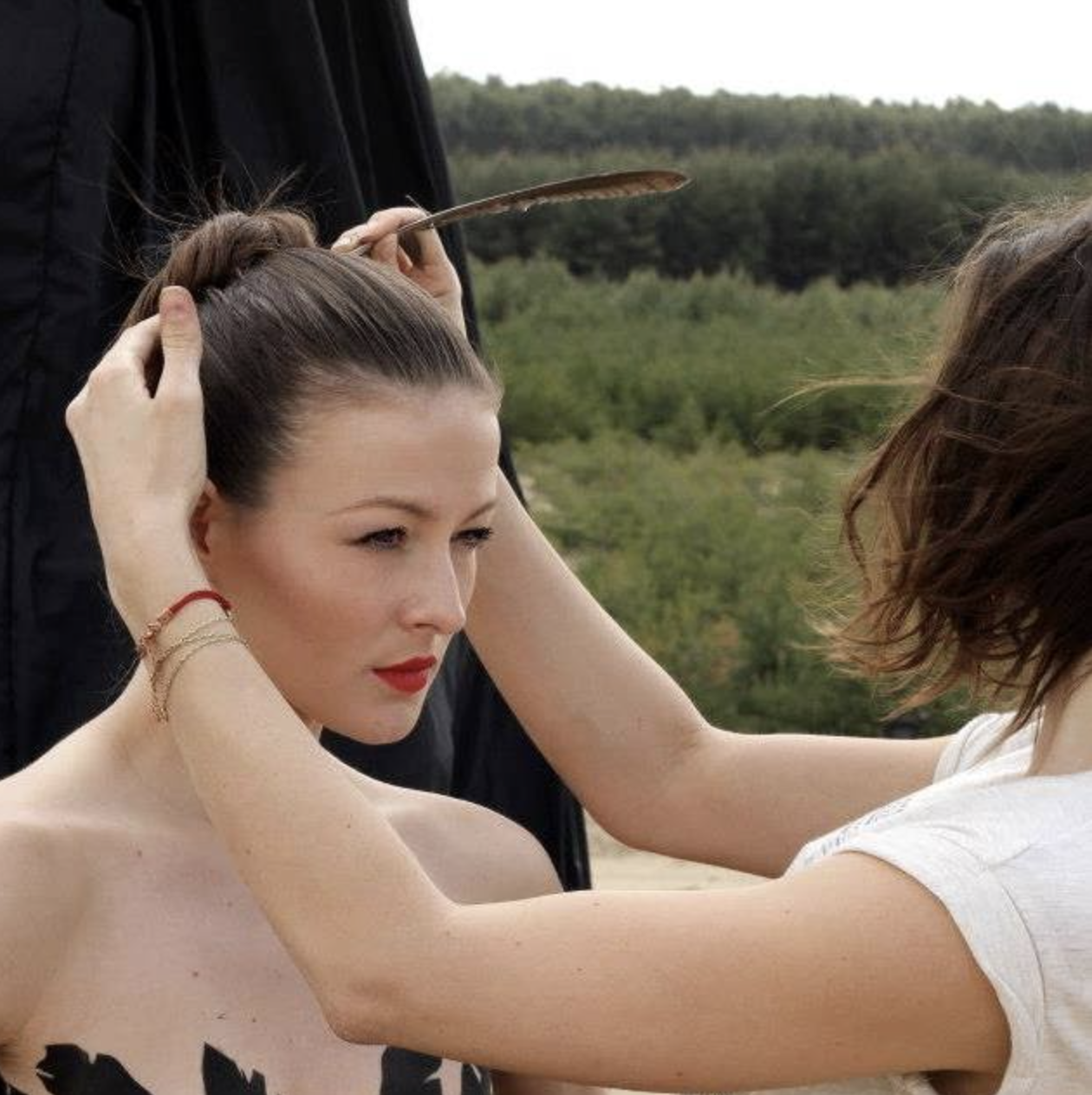
Sara Danielova [dancer]
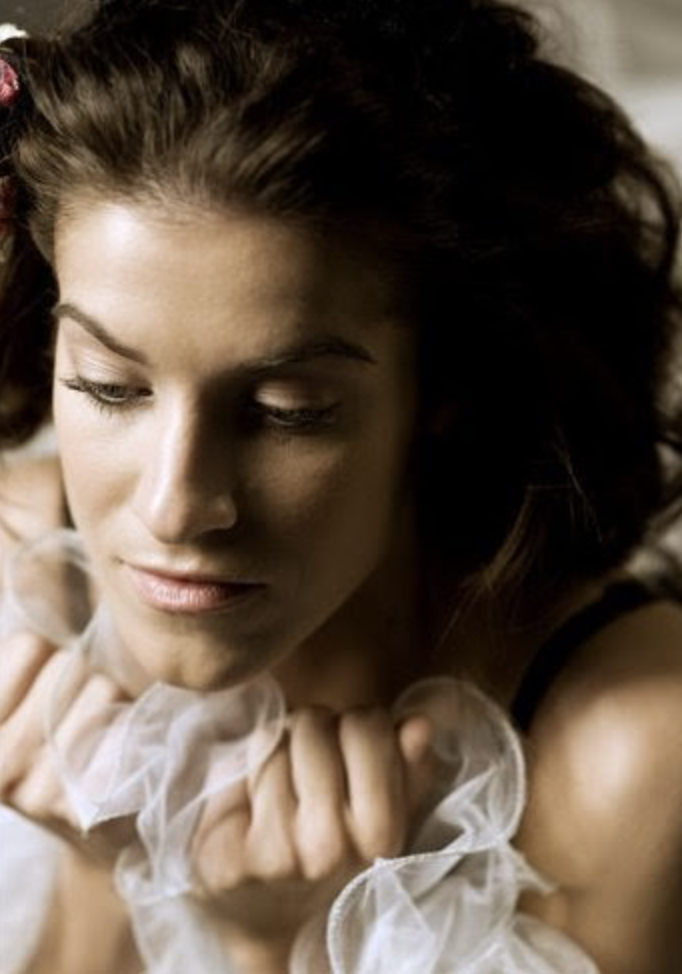
Adriana Pinkova [dancer]
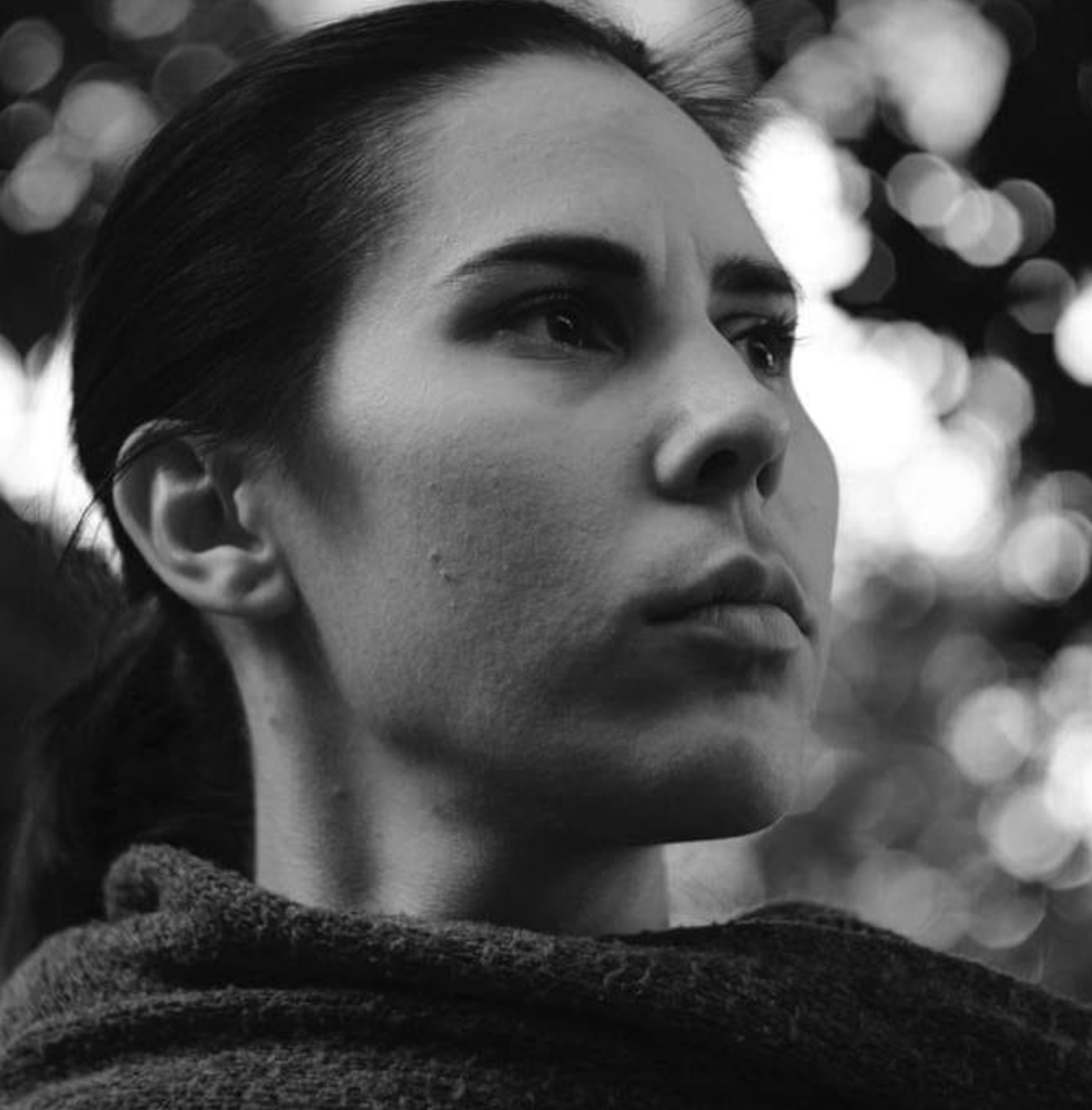
Maria Miklovicova [dancer]
Neang Neak (Serpent Goddess)
蛇の女神
3'50
監督:菅野将弘
振付:Sophiline Cheam Shapiro
カンボジア 2012
ダンス映画監督たちへのメールインタビュー
A Mail Questionnair to Dance Film Directors
インタビュアー・翻訳:黒田瑞仁
まず最初に、あなたについて教えてください。どういう作品を作ってこられましたか?
映像作家の菅野(すがの)と申します。ドキュメンタリー、フィクション、写真アニメ、短編等さまざまな動画を制作してきました。
カンボジアでの制作のようですが、監督だけが日本人の方のようです。彼の参加にはどういった経緯があったのでしょうか。
僕達の家族は2011年から2015年の夏までカンボジアに住んでいました。僕自身は1990年から米国留学し、それ以降アメリカに在住しております。カンボジアの知り合いに伝統舞踊のカンパニーを運営している方がいらっしゃって、いつかコラボしましょうと話していました。この作品はそれが実ったものです。
踊りについて教えてください。踊りは伝統的に見えましたが、”Season of Migration”という作品がクレジットされていました。新しい振付なのでしょうか。
この踊りの振りはソプリン•シャピロさんというそのカンパニーのクリエイティブ•ディレクターをされているカンボジア人の女性が、自身がアメリカに移住した若き頃の苦労と孤独をテーマに創られた作品群からの抜粋です。タイトルの『マイグレーション』はそこに由来します。
現代的なスーツ姿の人物たちが出て来ますが、踊る女神の姿が見えていないようです。彼らは誰なのでしょうか。
この踊りは『ネアン•ネアック』と言うカンボジアの伝説に現れる半身大蛇の天女の悲しい経験と発見を表現しています。ネアックは好奇心を胸に地上に降りてきたのですが、自分の尻尾が目立って周りの人間から避けられていることに気づき、自己嫌悪に陥ります。蛇である半身を憎しみ切り落とそうとも考えるのですが、その時自分の持った美しさと強さを思い出させられるのです。ネアックは自分が授かった蛇である姿を憎まずに愛おしく思うようになります。そうすると周りの視線や言葉がまったく気にならなくなり、天女としての誇りを取り戻すのです。
作品を通して映像の色が変化し続けます。色は、どんな意味を持っていますか。
この映像は天の世界と地上の世界の二つの舞台から成り立ちます。極彩色は天神の理想的な世界を現します、それ以外の色あせた部分は悲しみや懐疑を表現しています。
知らない土地での孤独が作品の下敷きになっていると前回のインタビューで語っていただきました。主人公はタイトルの通り蛇の女神ですが、蛇という動物や蛇の女神はカンボジアの人々からはどのように捉えられている存在なのでしょうか。
カンボジアをはじめ多くの東南アジアの国々は『ナガ』という神話に基づいた蛇の人種との関係を大切にしています。カンボジアの人々は最初の王とそれを祝福したナガ族の姫との間にもうけられた子の子孫であると言い伝えられています。つまりカンボジア人は尊い蛇族の血を受け継いでいるのです。多くの古典物語、影芝居、踊りにはこのナガ族のキャラクターがあらわれ、人を困らせたり守ったりします。特に水との関係が強いようです。カンボジアに行かれたことのある方はご存知だと思いますが、寺院や宮廷近くの橋の欄干はたいてい7つ頭のナガで飾られています。蛇の尾をもったナガ族のお姫様が地上に降り立った時の孤独さを現代人の社会的孤立と対比させたのは、振り付けをされたソプリン師匠の素晴らしい感性です。
WEBサイト
http://studio-revolt.com/
Please tell us about you, and what kind of films you have made in the past.
I am Sugano, a screen film artist. In the past I have created documentary, fiction, photo animation, short films and more.
I believe this film was produced in Cambodia, but I noticed that the director is Japanese. How did he become a part of the team?
Me and my family have been living in Cambodia from 2011 to 2015. I myself have studied in America from 1990 and lived there since then. There was a friend of mine in Cambodia that runs a traditional dance company, so we were talking of collaborations. And so we became to create this film.
About the choreograph. The dance seems to be quite traditional but it was credited ”Season of Migration”. Is it a newly choreographed piece?
The dance is extracted from a series of choreographic pieces, where the creative director of a traditional dance company, Sophiline Cheam Shapiro a female Cambodian created from the harsh memories of her migration in America. The title “Seasons of Migration” comes from here.
There are people dressed in modern clothing and do not seem to recognize the dancing goddess. Who are they?
The story is based on a Cambodian legend called Neang Neak, where a serpent goddess appears to experience sorrowful moments but lead to a discovery.
Neak was curious enough to come down to the human world, but finds out that her body is different from others, so she feels left out and miserable. She finally thinks of cutting off the serpent half of her body. At that moment, she remembers the beauty and the strength of herself. Neak starts to love herself, all different from the humans. She stops to care about the gazes and words she receives from others, and regain her pride as a goddess.
Colours in the screen keep on changing throughout the film. What does the colours represent?
There are 2 worlds in this film. Upper world and our world. The vivid colouring represents the ideal world of the gods. Other colours, more dull and dim represents sadness and doubt.
You told us in our last interview that the loneliness in a foreign land underlies in your work. I also understand as the title suggests, that the main character is a snake goddess. How is the snake as an animal, and the snake goddess perceived by the Cambodian people?
Cambodia and many other Southeast Asian countries have a very important relationship with the snake-humans based on the myth of the "Naga". Legend tells that the Cambodian people are descendants of their first king and the Naga princess who blessed him. In other words, Cambodians are kins of the sacred snake blood. Many classical stories, shadow plays and dances have Nagas in them, both troubling and protecting the people. The Nagas seems to have a particularly strong relationship with the water. If you have been to Cambodia, you will probably know that most of the bridges close to temples and palaces are decorated with seven-headed Nagas. It’s was the wonderful insight of Master Sophiline, the choreographer, in contrasting the loneliness of the Naga princess when she descends to this world with the snake's tail, and the social isolation of modern people.
WEBサイト
http://studio-revolt.com/
PATTES DE DEUX
ふたつの足あと
10’47
監督:Maroussia Vossen, Etienne Sandrin, Antoine Miserey, Laurence Braunberger
振付:Maroussia Vossen
フランス 2010
ダンス映画監督たちへのメールインタビュー
A Mail Questionnair to Dance Film Directors
インタビュアー・翻訳:黒田瑞仁
出演されていたダンサーについて教えてください。どんな技術を持ち、どういった活躍をされている方ですか。
マルーシア・ヴッセンはパリ生まれ。5歳からダンスを始め、ルシアン・レグラン(パリ・オペラ座)の指導の下、9年間のクラシック・トレーニングを受けています。15歳でコンテンポラリーダンスに転向し、リンダ・ダイアモンドに師事。日本のダンサー矢野英征と長い間コラボレーションを行っています。ソロ活動として、多くのアーティスト、振付家、美術家、音楽家、詩人、ファッションデザイナー、写真家(矢野、アンリ・テキシエ、ジークフリート・ケスラー、トニー・スーリエ、ブリジット・フォンテーヌ、ロジェ・テシエ、ジャック・ラカリエール、エドゥアール・ブーバ、アンリ・ミショー、ガストン・F・ベルジェレ、シルヴァン・カサップなど Yano, Henri Texier, Siegfried Kessler, Tony Soulié, Brigitte Fontaine, Roger Tessier, Jacques Laccarière, Edouard Boubat, Henri Michaux, Gaston F Bergeret, Sylvain Kassap...)とのコラボレーションを行いました。ニューヨーク、ハンブルク、パリ、アムステルダムでの活躍を経て、彼女のダンスには芸術とそれらの都市が混ざり合っています。即興を最も得意とし、屋内外、路上、庭、美術館のギャラリー、そしてもちろん舞台上でも、神聖さと優雅さを備えたスタイルで空間と対話しています。「歩行する踊り手」である彼女は、その身体、揺れるステップ、そしていつも自由な精神で、言葉や感情を描き出します。振付ワークショップをパリなどで定期的に開催しています。
https://maroussiavossen.wordpress.com
実際の猫と、猫をモチーフにした踊りを踊る人を同時に見ると、当然ながら猫と猫を模した踊りは別物だということがわかります。モチーフをダンスの振り付けに落とし込むときにどういった操作が必要なのでしょうか。
この映画は、振り付けの厳密さによって成り立っていますが、同時に動物を演出することの難しさ、不可能な夢を形にするために、猫と踊るが猫のように踊らないことで成り立たせようともしています。マルーシアにとって何よりも大事だったのは、猫と対話できる形を見つけることでした。つまり本質的には、お互いへの誘惑を燃料にした即興作品なのです。
最初に雪が降る街中でダンサーが一人で踊っていますが、途中から白い空間に移ります。彼女はどこに迷い込んだのでしょうか。
この作品は、パリのドーフィーヌ広場にあるシモーヌ・シニョレ(Simone Signoret)と同じ家に長く住んでいたクリス・マルケル(Chris Marker)への賛辞です。冬の日にその広場で撮影された冒頭の映像は、私たちが探求していた魔法的な側面をウィンクのような一瞬で補ってくれています。
Please tell us about the dancer. What kind of background does she have?
Maroussia Vossen was born in Paris. She started dancing at the age of 5 and did 9 years of classical training under the direction of Lucien LEGRAND (Paris Opera) . At the age of 15, she turns to contemporary dance and takes classes with Linda DIAMOND. She has a long collaboration with the Japanese dancer Hideyuki YANO. Soloist, she has collaborated with many artists, choreographers, visual artists, musicians, poets, fashion designers, photographers (Yano, Henri Texier, Siegfried Kessler, Tony Soulié, Brigitte Fontaine, Roger Tessier, Jacques Laccarière, Edouard Boubat, Henri Michaux, Gaston F Bergeret, Sylvain Kassap...). From New York to Hamburg, via Paris and Amsterdam, her dance is at the crossroads of arts and influences. Improvisation remains her favorite mode of expression, indoors or outdoors, in the street, in gardens, museum galleries and of course on stage, she dialogues with the space, in a style both hieratic and graceful. The "pedestrian dancer" writes words and emotions with her body, her swaying step and her always free spirit. She leads a choreographic workshop and regularly offers workshops in Paris.
https://maroussiavossen.wordpress.com
When you see a dancer dancing a cat-inspired choreography and an actual cat at the same time, you can see of course, that the cat and the dance is totally different. What do you have to do to translate the motifs into choreography?
The film was built on the rigor of the choreography but also on the difficulty of directing an animal, in order to put into shape this improbable dream: to dance with a cat and not like a cat. It was above all for Maroussia to find a form that would allow her to dialogue with the cat. It is therefore essentially a work of improvisation fueled by a game of mutual seduction.
At the start of the film, the dancer is dancing alone in a snowing street, she is placed into a white blank space. Where has she wandered into?
The film is a tribute to Chris Marker, who lived for a long time in the same house as Simone Signoret at Place Dauphine in Paris. These first images shot there on a winter's day are a wink and reinforce the magical side we were looking for.
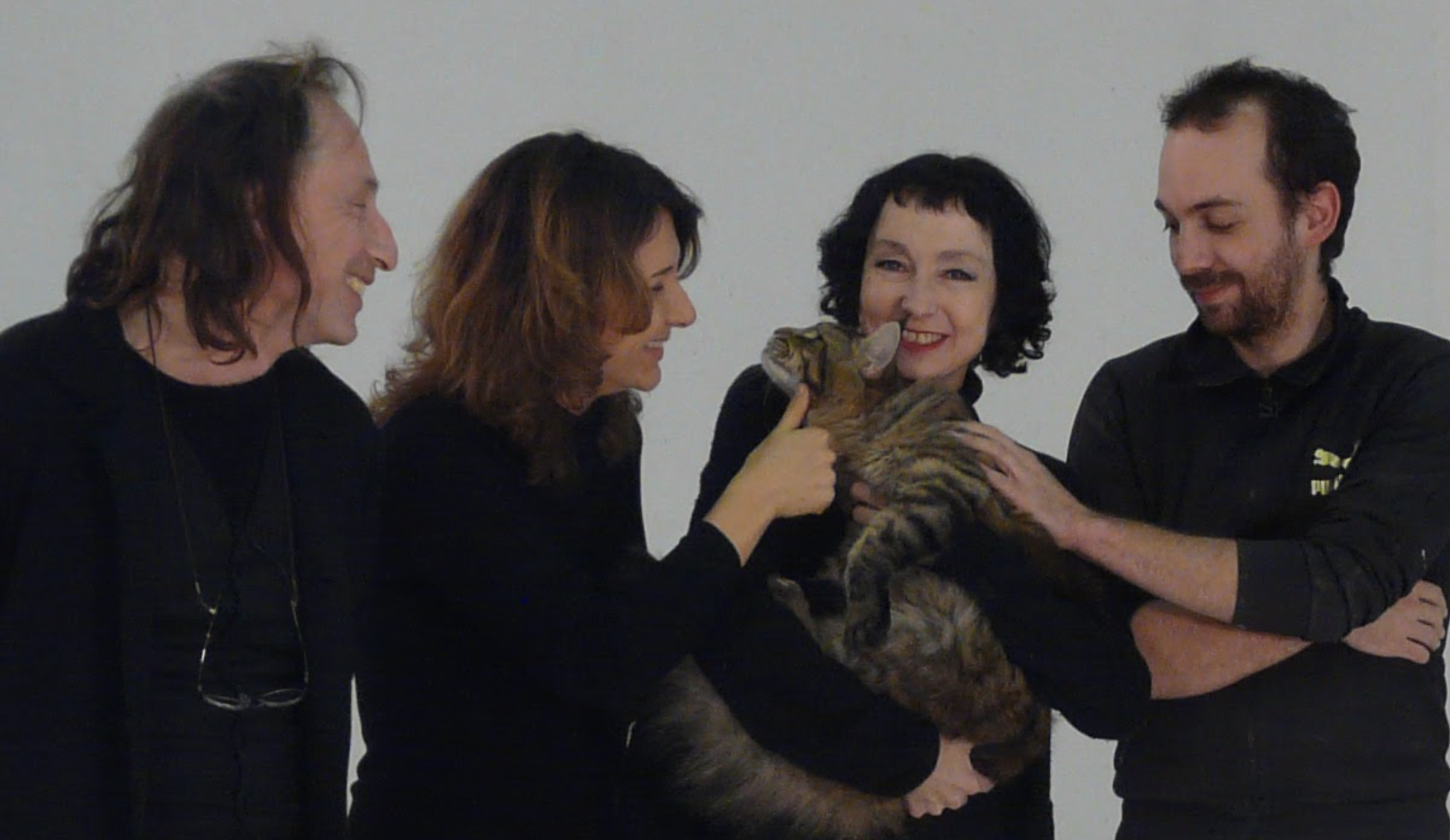
Homing
ホーミング
29’59
監督:Xabier Iriondo
振付:Marina Mascarell
スペイン・バスク州 2014
ダンス映画監督たちへのメールインタビュー
A Mail Questionnair to Dance Film Directors
インタビュアー・翻訳:黒田瑞仁
まず最初に、あなたについて教えてください。どういう作品を作ってきましたか?
ずっと低予算の映画を撮ってきました。そのほとんどがドキュメンタリーか、田中泯さんと作った「Field」という作品(私の仕事のうち一番重要なものです)のようなお話のないノンフィクションの短編です。
「ホーミング」は私にとって最初のフィクション映画であり、最も商業的な作品になりました。FilmotiveのIñaki Sagastumeのようなプロデューサーと仕事をしたことは今までになく、彼の力なしにはあり得ない企画でした。
私の仕事はどれも互いに似ていなくて、一つ一つを関連づけるのは難しいです。言えることがあるとしたら、私は自然と都市の関係に興味があるのかもしれません。
衣装が印象的でした。動きは日常のものではないのに、着ているものはカジュアルな印象を受けました。どうやって決めたのですか?
衣装デザイナーがいなかったので、振付家のMarina Mascarellと相談して現実的に決めていきました。快適に踊れる、Navarra(※訳者註 ナバラ。スペイン北部の地域。)の森や土地で見かけるような色彩の服が必要だということになりました。ただ、メインキャラクターには青いドレスが欲しかった。彼女は森に属さないからです。靴も他とは違っています。
画面から場所の匂いや、出演者の息づかいが伝わってきました。そういう空気感を出すために、撮影や編集で工夫している点はありますか?
天然の光と音が欲しかったので、音や視覚のエフェクトは何も使っていません。ロケーションも非常に大事で、その点われわれは幸運でした。冒頭のシーンに霧が欲しかったとき、ちょうどかかっていました。ソロシーンにも霧雨が欲しかったのですが、それも降っていました。努力と運ですね。Iñakiは土地を誰よりもよく知っていました。
録音は必ずカメラと同じ位置で行いました。重要なのはダンサーがカメラに近づく時に、彼らの音に耳を澄ませることです。撮影場所の静寂はFernando Aguirreが自然な音を取るのを助けてくれました。 Iñigo Ugarteburuの音楽やIosu Gonzalezの音の調整は、この率直で自然な録音を尊重してくれました。
ダンサー達はお互いに触れて、じゃれあうように動くパートがあります。あの動きは即興でしょうか?即興だとしたら、何テイクくらいしたのでしょうか?
あれは即興ではありません。力強さと早さを重視した森を駆け抜けるパート以外に、即興はしていません。Marinaは撮影前にスタジオでダンサー達と稽古を重ねていました。テイクはどれも一、二度です。たまに三度のものもありました。
ダンスをしないシーンのほうがテイクを重ねました。振り付けからの移り変わりの部分などです。主演のCarolinaとカメラマンはお互いのことを理解していなければなりません。少しずつ掴んでいった結果、彼女のことを自然で綺麗に撮れたと思います。
Homingという題が、色々と連想させます。あなたの故郷はどういう所ですか?
私のガールフレンドのAndreaがこのタイトルを思いついてくれました。森から街に移る女の子について作品をつくるつもりだと私が言うと、彼女は動物が産まれた場所に戻ってくる現象である帰巣本能、ホーミングについて教えてくれました。自分は海と山に囲まれたZarautzで育ちましたが、今は騒音と公害でいっぱいのマドリッドで暮らしています。自分がどこに属するのか、まだよくわからないんです。
6年前に制作されたこの作品を、今観て、心境の変化はありますか?
昨年パリで『ホーミング』を観た時には、友人たちに囲まれて暮らしていた時の思い出が蘇ってきました。私は技術的な部分に注意を払うことができず、ほかに取り得たかもしれない手法について考えることすらできませんでした。常に次のプロジェクトに集中するようにしています。
Please tell us about you, and what kind of films you have made in the past.
Xabier Iriondo: I have always shooted low budget films, usually documentaries or non narrative and non fiction little films, like Field, with Min Tanaka (the most special project I`ve ever done).
Homing is my first fiction film, the most comercial project. It`s the first time I have worked with a producer, Iñaki Sagastume from Filmotive, and it would have been impossible to make it with out his great work.
All my projects are very different. There is not a formal connection from one to another. Maybe my interest in the relationship between nature and city.
I was impressed by the costumes. The moves weren't that of every day life, but I thought some costumes the performers wore gave a casual impression. How do you plan the costumes?
Xabier Iriondo: I talked with Marina Mascarell, the choreographer, and, since we didn´t have a costume designer, we made a practical decision. We needed confortable clothings for dancing and also colors that you could find in the woods and landscape of Navarra. However, for the main character, I wanted a blue dress. She does't belong to those woods. She also wears different shoes.
I could feel the smell of the air or the breaths of the performers inside the film strongly. Is there anything you do to have those effects?
Xabier Iriondo: We wanted natural light and sound. We didn`t use any sound or visual effects. The locations were very important and we got lucky. We needed fog for the beginning and we found it, we wanted fine drizzle for the solo and we also found it… work and luck. Iñaki knows the area better than anybody.
The idea for the sound was to register it always from the camera´s point of view. It was important to listen to the dancers as they were getting closer to the camera. The great silence of the locations helped Fernando Aguirre to get a natural sound. Iñigo Ugarteburu`s soundtrack and Iosu Gonzalez`s final mixes respected this direct natural sound.
There are some scenes that the dancers touch each other and move like they are playful animals. Are those moves a total improvisation? How much takes did you do in those scenes?
Xabier Iriondo: There was not improvisation. Except for the sequence were they run through the woods, where we tried to get his strength and speed, we did`t improvise. Marina worked a lot with the dancers at the studio before the shooting. We made one or two takes for each dancing scene, maybe three.
We made more takes for the non dancing scenes, the transitions between choreographys. Carolina and the camera needed to understand each other. Little by little we made it and I think she looks natural and pretty.
The title 'Homing', stirs our imagination. Does the word mean home as in the word home-town? What kind of place was the land you grew up in?
Xabier Iriondo: My girlfriend Andrea came up with the title. I told her that I wanted to shoot a girl moving from the woods to the city. She told me about a word describing the instinct that some animals have to come back to their birthplace, the homing instinct. I grew up in Zarautz, a town surrounded by the ocean and mountains but I live in Madrid, a big noisy city full of pollution. I don`t know yet where I belong.
It has been 6 years since this film was created in 2014. Has your perspective on this work changed in any way?
I watched Homing last year in Paris and it brought me great memories of the experience I lived surrounded by friends. I couldn´t pay attention to the technical details or think about any other possible approach to the film. I always try to focus on the next project.
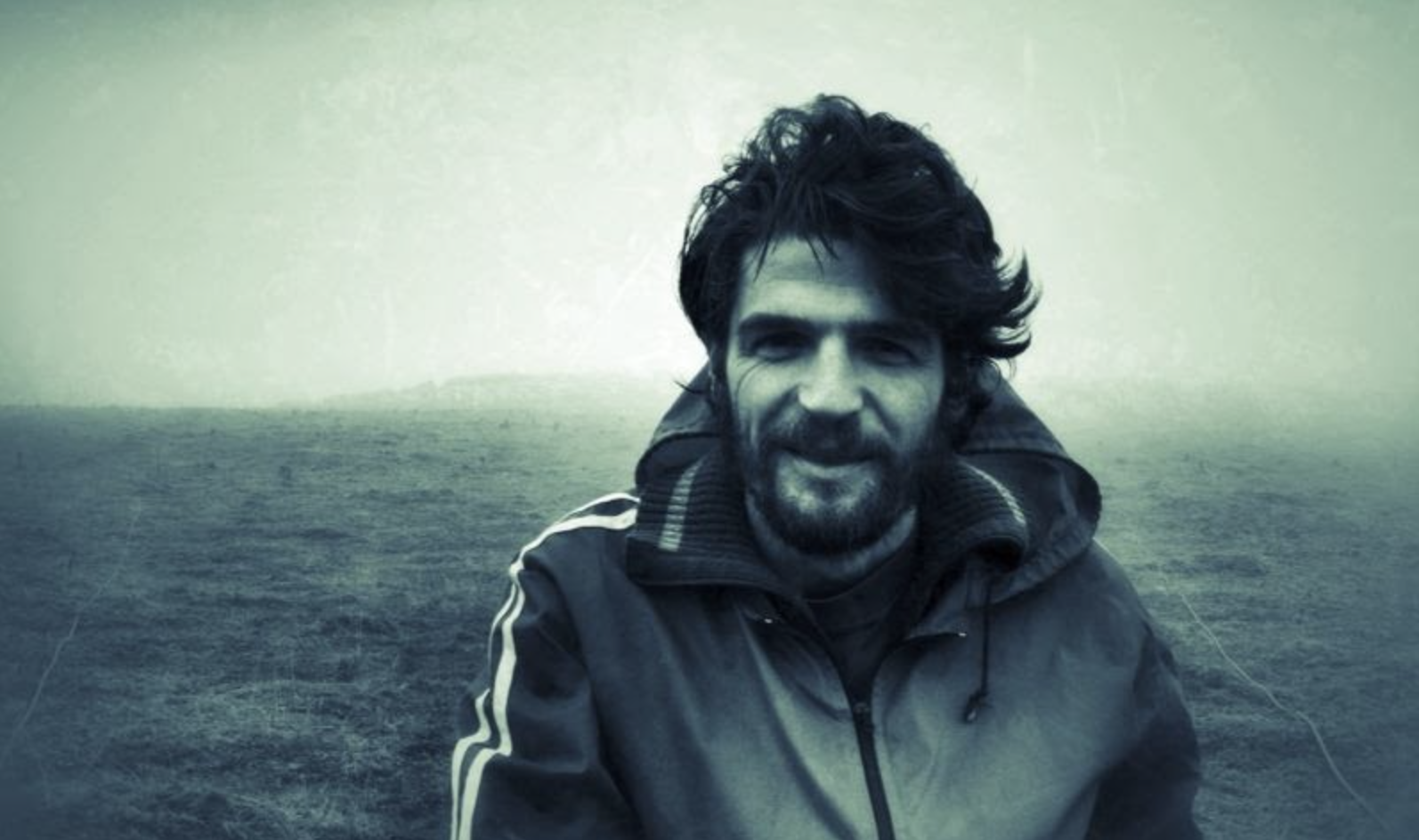
シャビエル・イリオンド
ナバラ大学で広告と広報の学位を取得した後、シャビエル・イリオンド(1978年, スペイン バスク生まれ)は、マドリードで映画を学び、撮影の学位を取得。
チリやドミニカ共和国など様々な国に滞在し、監督・撮影監督としてドキュメンタリーやフィクションのプロジェクトを数多く手がける。また、カフェ・テアトロやカルカスカラのようなソナやエルツといった映画祭内の音関係のプロジェクトにも携わる。これらの経験を生かして、ロレンソ・バーバーの作品を下敷きに「ソナー・キュダデス Sonar Ciudades」を監督。同作品では音声が大きな役割を占める。
2008年には東京での生活を経て、現在も取り組み続けている手法に着手。その場その場でのイメージの反映、映像形式の濃密さ身体性に注目する。様々な作品の中でイリオンドは、時間が印象を形成し作成するようなロングで静的なショットを活用している。イメージの反映については、東京での都市体験や日常生活の影響がある。また、彼はダンスやパフォーマンスへの関心の他に、都市やその時空座標(『メメント・モリ』『東京にようこそ、触らないでください(Wellcome To Tokyo, Please Don’t Touch Me)』にも向き合って創作している。田中泯とのプロジェクト「フィールド Field」では、時間、自然、動作の複雑な関係性を興味深い読み取りを通じて表現している。
Xabier Iriondo
2014年には振付家マリーナ・マスカレルMarina Mascarellと音楽家のイアニゴ・ウガルテブルÍñigo UgarteburuとのコラボレーションによるフィルモーティブFilmotive製作の『Homing』を発表した。
After receiving a degree in Advertising and Public Relations from the University of Navarra, Xabier Iriondo (Basque Country, Spain 1978) did film studies in Madrid, where he got a Diploma in Cinematography.
He has spent time in various countries such as Chile and the Dominican Republic, where he has worked as a director and cinematographer on many documentary and fiction projects. He has also worked on various sound projects such as Café Teatro and Carcáscara, which have been in festivals such as Sónar or Ertz. Thanks to these previous experiences he directed a film called “Sonar Ciudades”, based on Llorenç Barber’s work, where sound has particular relevance.
In 2008 he went to live in Tokyo, Japan, where he started to develop the kind of work, which he continues to be immersed in today. He focuses on the reflexion of the temporary image and the dense and corporeal of film format. In his different pieces of work, Iriondo uses long and still shots where time models and creates the images. Many of these reflections are to do with urban experiences in Tokyo and general everyday life. He also works with the city, and its time and space coordinates (“Memento Mori”, “Wellcome To Tokyo, Please Don’t Touch Me”) as well as having an interest in dance and performance. You can see this in Field, his Project with Min Tanaka, where he uses interesting readings about the complex relations between time, nature and movement.
In 2014 he directed “Homing”, produced by Filmotive, in collaboration with the choreographer Marina Mascarell and the musician Íñigo Ugarteburu.
